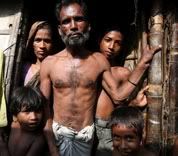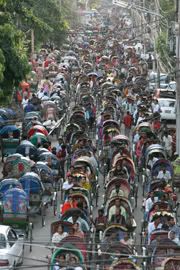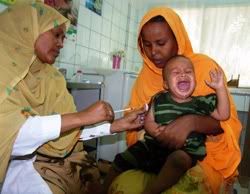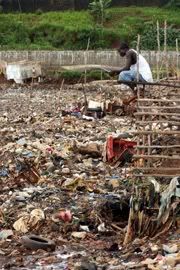
The IRIN (Integrated Regional Information Networks), a news subsidiary of the UN Office for the Coordination of Humanitarian Affairs, this morning distributed this multi article feature on the incredible depth of poverty that exists in the world’s urban areas, which will only continue to rise through the next decade.
The total global slum population is expected to reach 1.4 billion by 2020. Billions of city dwellers live on the very edge of survival, and the risks they face can be no less severe than some situations described internationally as “humanitarian emergencies”.
Their circumstances make them vulnerable to shocks and dangers, such as organised crime and epidemics, that have no equivalent in rural life. Marginal locations and over-crowding make city slums extremely vulnerable to natural disasters and the negative impacts of climate change.
The appalling circumstance of these slums – which house more than a billion people already – is just a taste of things to come. Tomorrow’s crises, analysts say, will be experienced increasingly in cities. But even today, millions live in perpetual crisis. Their harsh existence and the shocks they face show us a glimpse of the future, and are, in fact, tomorrow’s crises today.
Some stakeholders, including UN agencies and NGOs, donors and governments, are beginning to reassess their engagement with extreme urban poverty and urban risk.
IRIN has been examining the humanitarian dimensions of urbanisation, and today launches a special In-Depth package of reports, photos and video from around the world on the issue.
IRIN’s coverage of urban risk will continue, and in the coming weeks further products, including a book and a documentary film will be released to coincide with World Habitat Day on October 4.
Visit: In-Depth: Tomorrow’s Crises Today at this link.
The central article is titled, Tomorrow’s Crises Today: The Humanitarian Impact of Urbanisation, and begins,
Somewhere, some time this year, a baby will be born on the 25th floor of a city hospital or the dirt floor of a dark slum shack; a first-year college graduate will rent a cramped apartment in lower Manhattan or a family of five will finally concede their plot of farm land to an encroaching desert – or sea – and turn towards Jakarta or La Paz or Lagos in search of a new livelihood and a new home. The arrival of this family or graduate or baby will tip the world’s demographic scale and, for the first time in history, more than half the human population will live in cities.
Photos accompanying the article provide a taste of this present and growing humanitarian crisis.
This girl supports herself and her family by rummaging through the rubbish on the outskirts of Cairo for scraps to sell. She is one of millions of children worldwide who have limited or no access to education.
Every year thousands of people migrate to cities, exacerbating the strain on infrastructure and services in urban areas. Dhaka, the capital of Bangladesh, is known as the Rickshaw Capital, but at least the air pollution is not as bad as in many other big cities
In many developing countries children have no access to healthcare. Statistics are especially hard to come by in sub-Saharan Africa; however, in general, the children who grow up in urban poverty are at higher risk of contracting communicable diseases than those in rural areas. This child is being vaccinated during an inoculation campaign in Djibouti.
A slum dweller in Freetown, Sierra Leone, listening to the 2007 election campaign on the radio. Many slum dwellers have little or no political powers or influence but instead fear the consequences of policies that are most likely to drive them from their homes or further limit their access to basic services
In May 2007, Colombo, the capital of Sri Lanka, was struck by flooding; areas not normally flood-prone were under water for hours. The urban poor in big cities are especially vulnerable because they tend to settle in flood plains and other high-risk areas
If you are interested in world poverty, IRIN is the one of the most informative sites on the internet, linked here.









